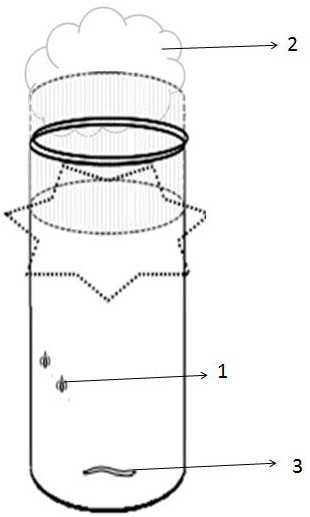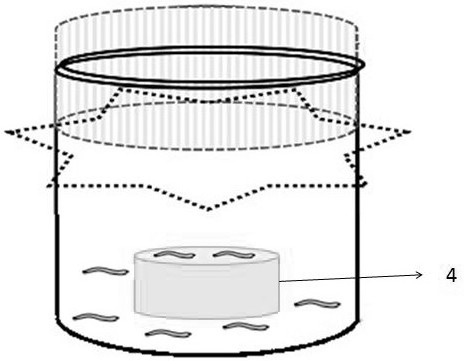Indoor propagation method of Cotesia flavipes Cameron
A technology of velvet beetle and borer yellow, which is applied in the field of biological control of plant protection pests, and can solve the problems of breeding and breeding technology that have not been reported.
- Summary
- Abstract
- Description
- Claims
- Application Information
AI Technical Summary
Problems solved by technology
Method used
Image
Examples
Embodiment Construction
[0026] The following embodiments further describe the present invention in conjunction with the accompanying drawings.
[0027] The specific implementation steps of the indoor propagation technology of the crocodile beetle of the present invention are as follows:
[0028] 1. See figure 1 , place a single 4-5 instar larvae in a finger-shaped glass tube, use a fluke tube to connect to a 1:1-2:1 male-to-female ratio of B. Seal the mouth of the glass tube with gauze, put the absorbent cotton ball dipped in the nutrient solution, and wrap the finger-shaped glass tube with black cloth to let the parasitic wasps parasitize the larvae of the large borer for 6-8 hours.
[0029] 2. After 6-8 hours of parasitism, take out the larvae from the finger-shaped glass tube, and then insert the non-parasitic larvae into the finger-shaped glass tube of B. To the complete death of B.
[0030] 3. During the parasitic process of P. japonica, if part of P. chinensis in a single finger-shaped glas...
PUM
 Login to View More
Login to View More Abstract
Description
Claims
Application Information
 Login to View More
Login to View More - R&D Engineer
- R&D Manager
- IP Professional
- Industry Leading Data Capabilities
- Powerful AI technology
- Patent DNA Extraction
Browse by: Latest US Patents, China's latest patents, Technical Efficacy Thesaurus, Application Domain, Technology Topic, Popular Technical Reports.
© 2024 PatSnap. All rights reserved.Legal|Privacy policy|Modern Slavery Act Transparency Statement|Sitemap|About US| Contact US: help@patsnap.com










